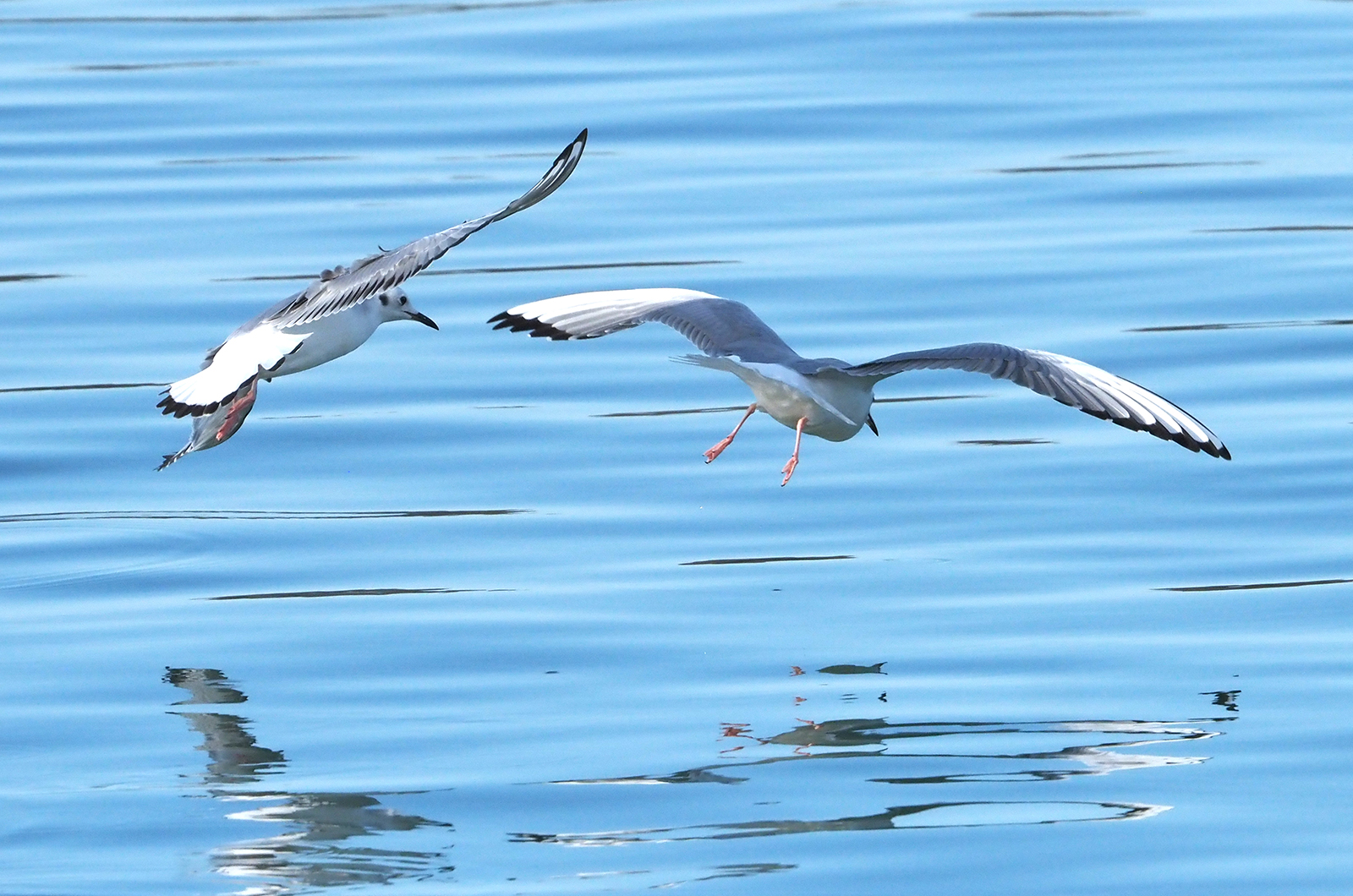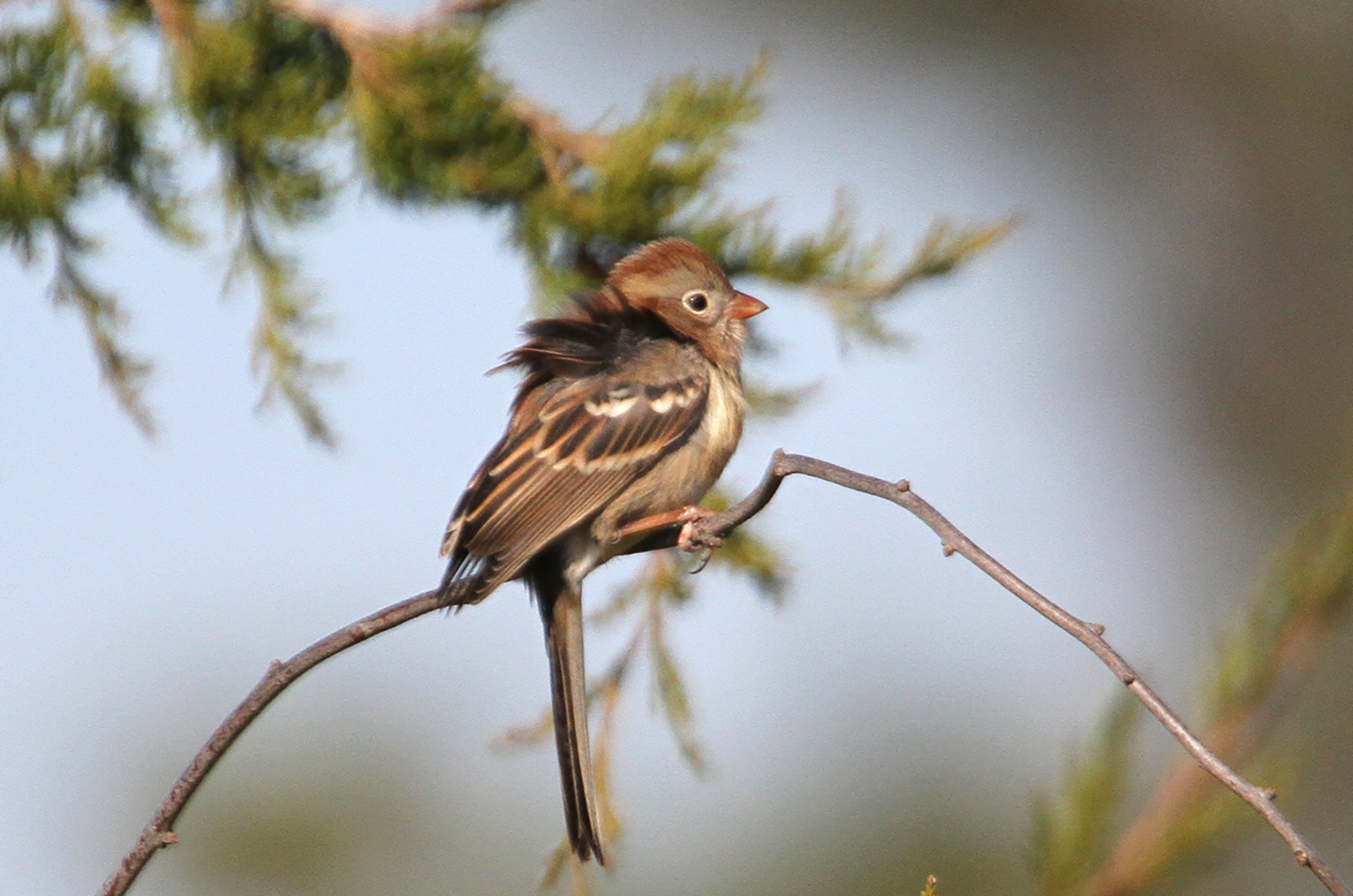We were lucky that we did not get battered by the Christmas storm! Though we had flooding because of to the combination of the New Moon and the storm winds, we did not have a blizzard with extremely cold temperatures. The six inches of the white stuff that we got was dry and fluffy because of the temperature being around 20 degrees Fahrenheit, rather than the heavy, wet snow we usually get.
We need to keep our feeders stocked with food and to keep bird baths ice-free during cold weather; birds depend on the calories they get from feeders to survive below-freezing nighttime temperatures, especially since snow hides food that is on the ground.
Birders will be ringing in the New Year with the annual Christmas Bird Count on Jan. 1. More than a dozen field teams will be birding dawn to dusk, covering their assigned territories to count all the birds they find. We hope the rain moves past faster than predicted; it is hard to find birds that are hiding in dense vegetation to escape the weather!
Please make sure your bird feeders are full on Sunday, and do not be surprised if you see a group of binocular-clad birders checking your feeders. Even if you see us nearby, please submit a feeder count to report your findings. Feeder counts generally report a species that the field teams did not find. Directions for conducting a feeder count are posted on the website biodiversityworksmv.org, then click on Birding MV and then Christmas Bird Count.
Our count has been conducted every year since 1960. We average finding close to 120 species. Our highest count was 130 species twenty or so years ago, and every year we want to do better. To get to that level means that we find species that are not regularly found on the count. Some of these species were seen this past week and are mentioned below.
A clay-colored sparrow has only been seen on one count, in 2017. There is a lingering individual hanging out near the traffic circle at the Gay Head Cliffs that was seen most recently on Dec. 21 by both Cynthia Bloomquist and Bob Shriber.
Common ravens most recently arrived on the Island; the first-ever sighting was on April 20, 2014 as it flew over Mytoi Garden. Now they nest here. Most recently, ravens were spotted by Cynthia Bloomquist near the Aquinnah Wampanoag water testing laboratory on Dec. 21 and by Parker Fyfe-Kiernan near Edy’s Island in Menemsha Channel on Dec. 22. These large corvids have been seen during two counts, 2018 and 2020.
John Nelson and Tim Johnson both spotted a male Barrow’s goldeneye off East Chop on Dec. 26, a species that has been seen recently between the drawbridge and East Chop. Barrow’s goldeneye have been reported on five counts since 2004, most recently in 2019.
Great egrets are a fairly recent early winter sighting; they were first seen on a bird count in 2007 and have also been seen on five counts. Lisa Maxfield saw one at Brush Pond on Dec. 23 and Jeff Bernier saw one at Butler’s Mudhole — part of Sheriff’s Meadow Sanctuary — on both Dec. 18 and 19.
Two species of shorebirds, American oystercatcher and ruddy turnstone, were found by Jeff Bernier on Little Beach on Dec. 26. Oystercatchers have been only seen on six counts, all since 1996. Ruddy turnstones have been recorded six times, all since 1999.
A species that first appeared on the 2003 count is the lesser black-backed gull, and it has only been seen seven times on the count since then. Rich Couse spotted one at Long Point on Dec. 20.
Gus Ben David had a male dickcissel visiting his feeder on Dec. 23. This is the second individual he has seen there in the past month: he saw a female on Nov. 27. This species has been reported on 11 counts; the last time was in 2007.
Skip MacElhannon reports the first sighting this season of the much-sought-after snowy owl on Dec. 24. It was on a power line a couple of blocks north of Daggett avenue in Vineyard Haven. He has unsuccessfully sought them on beaches for several years, so finding one just about in his backyard was a nice surprise. This species has been recorded on 18 counts, and almost every year since the 2013 count.
The northern shoveler — a duck — has been seen on 22 of the 62 previous counts. This fall it has been regularly seen at Crystal Lake, most recently by Lanny McDowell on Dec. 21.
A Baltimore oriole has been seen on less than half (24 of 62) of all the counts and on most of the counts since 2007, but all sightings have been of one or two individuals. In other words, they are easy to miss. This is one of the species that could easily show up at your feeder. Most recently, Anne Whiting had one visiting her suet feeder on Dec. 21.
There are species that deserve mention even though they are frequently seen on the count. One is the common merganser and the first report of the season comes from Parker Fyfe-Kiernan near Edy’s Island in Menemsha Channel on Dec. 22. The second is the dainty Bonaparte’s gull, which is still lingering with three recent sightings: Lanny McDowell saw a flock by the seawall in Vineyard Haven harbor on Dec. 21, the same day that Shea Fee spotted six from the Chappy Ferry. And on Dec. 23, Anne Culbert observed a flock of 20 near the shellfish hatchery on Lagoon Pond.
Hermit thrushes hide out in dense thickets at this time of the year and the first indicator of their presence is their distinctive call note. Lanny McDowell spotted one on Dec. 19 in West Tisbury; Rich Couse found one at the Hoft Farm on Dec. 21; and Bob Shriber found one at the Gay Head Cliffs that same day. They are more common in the winter than they are in the summer and have been seen on every count since 1979.
Interestingly, field sparrows have also been observed on every count since 1979. Bob Shriber spotted one on Dec. 21 at the Gay Head Cliffs.
Good luck to all participants! Have fun and count a lot of birds!
Please email your sightings to birds@mvgazette.com.
Robert Culbert is an ecological consultant with Nature Watch LLC living in Vineyard Haven.











Comments
Comment policy »